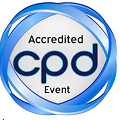
Seong Hwan Kim
Dankook University, Korea
Title: Recent outbreak of trichoderma damage in shiitake cultivation
Biography
Biography: Seong Hwan Kim
Abstract
Recently, Korean shiitake mushroom industry has been suffered from mushroom flies which feeds on mycelium of shiitake mushroom during its cultivation. The damages of shiitake bed-logs are assumed to be caused not only by the insect pest but also its fungal associates. From the examination of fungi derived in and out of the bodies of adults of mushroom flies that were reported as major pest in Shiitake cultivation using sawdust-medium, 1249 isolates were obtained and classified into 5 genera and 15 species. T. harzianum was found to be dominant. To get information on the six Trichoderma groups, their cultivation, growth, biochemical properties, scanning electron microscopic images of microstructures and nucleotide sequences of EF-1 alpha gene were investigated and compared. The results of a chromogenic media-based assay for extracellular enzymes showed that these Trichoderma species have the ability to produce amylase, carboxyl-methyl cellulase, avicelase, pectinase and β-glucosidase that degrade wood components of log-beds. A dual culture assay on PDA indicated that T. harzianum, T. atroviride, and T. citrinoviride were antagonistic against the mycelial growth of a shiitake strain (Lentinula edodes). Inoculation tests on shiitake bed-logs revealed that all the four species were able to damage the wood of bed-logs. Eleven fungicides including azoles types and fenarimol were tested against the Trichoderma spp. to select effective agent. Some of the tested fungicides inhibited the mycelial growth of few of the Trichoderma spp. Benomyl inhibited mycelial growth and spore germination of all the six Trichoderma spp. at MIC 10 µg/ml.

